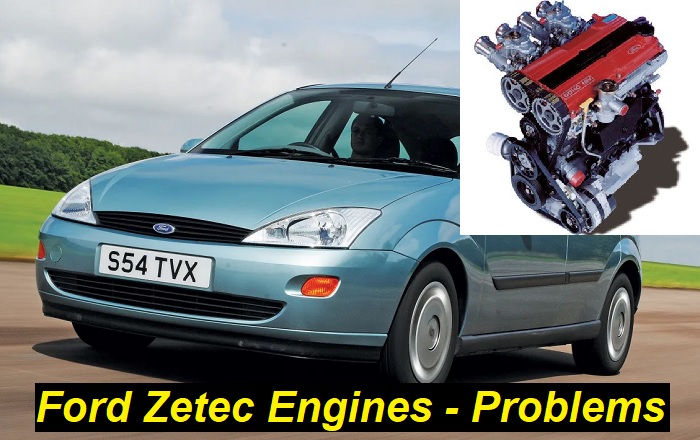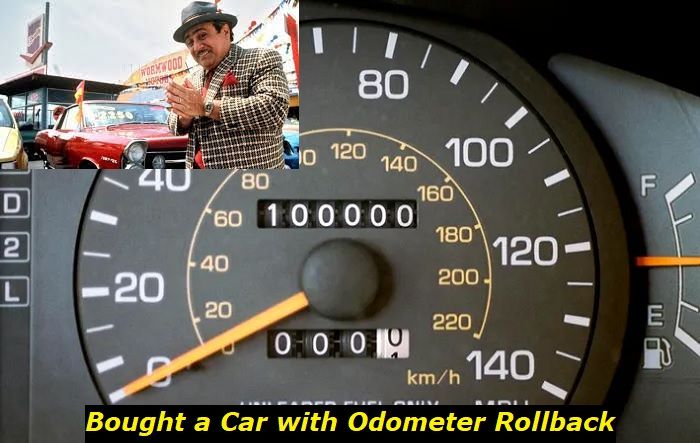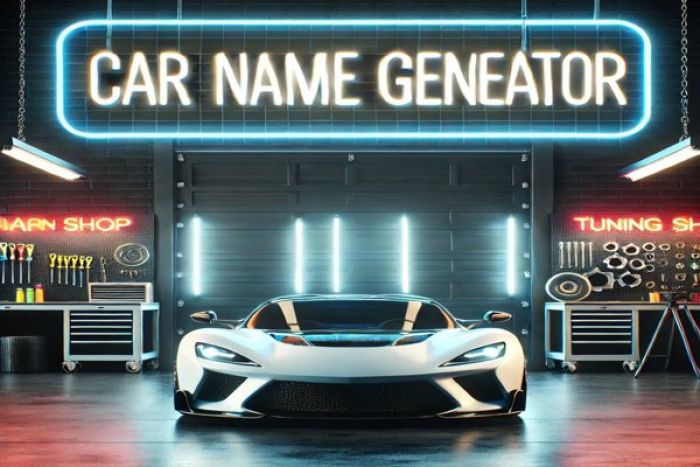In 1991, Ford started producing its new revolutionary engine series called Zetec. These engines were inline 4-cylinder units in the range of 1.6-2.0 liters (originally, then it was enlarged much). Now we could say that the construction was pretty simple, but in 1991 these engines were the representatives of cutting-edge technologies and unbelievable engineering breakthroughs.
Interestingly, a lot of Zetec engines are still in production. The fact that this series of engines has been here for over 30 years now is promising. But let's focus on some common issues we know about these engines. Today, we'll be speaking about the problems of Zetec engines engineered by Ford and we will cover some important features of these units.

Here are the main topics of the article:
- Zetec engines - main construction features you may want to know.
- Where have Zetec engines been used? Their model range.
- What are the common problems of Zetec engines?
- Longevity questions - how many miles can they go?
- How to maintain these engines and avoid their failures?
Let's get started!
What are Zetec engines? Some facts you should know
The company introduced this series 30 years ago and it's still in production with only some slight changes. You should know that the original Zetec engines that were introduced in 1991 ended production in 2004. But the name was well-recognized, so Ford decided to call a lot of other 4-cylinder engines this name, especially on the European market.
So, here are some facts and specs about Zetec engines:
- the range of displacement is 1.0 to 2.4 liters;
- all engines are 4-cylinder, inline location;
- the blocks were cast iron, in 2012 they became aluminum;
- heads were DOHC or SOHC with 4 or 2 valves per cylinder;
- some engines were turbocharged (for the Ford Focus RS);
- simple fuel injection is one of the important features;
- the power range is 65 to 215 horsepower;
- there were many subseries like Rocam, S, SE, E, R, etc.
The construction is actually simple. The DOHC or SOHC head, the simple block, no technological features of valve control or whatever. Everything is just classic, and that's why these engines are wanted as crate engines and as swap options for different models. They are durable, easy to maintain, and also practical.
The next series of these engines was the Duratec series which is even more well-known now. But the Zetec engines are still made and sold as crate engines mainly. The series is very successful, but in modern engines, only the name Zetec reminds us of the original Zeta series made in 1991.
What cars were powered with Zetec engines?
The series was mainly engineered for Europe. But after some time, it was also introduced in America with the Ford Contour. These engines were used in nearly all compact cars made by Ford. For example, Ford Focus, Ford Mondeo, Ford Escort, Ford Fiesta, Ford Fusion (the European one), Ford Puma, etc. In America, these engines are known thanks to Ford Contour, Ford Escape, Mercury Mystique, and also Mazda Tribute.
A lot of vehicles used Zetec engines and were quite durable. We could say that the majority of these engines were very successful. The 1.6 Zetec is still made in some markets and used for powering the base models of Ford Focus, for example.
What are the good sides of Zetec engines?
We can't say that this engine has a lot of special advantages that deserve a special list. We can only say that the engines are not very gas-thirsty. They have optimal consumption - not much more and not less than their average counterparts. Also, these engines have a very simple construction and they are easy to repair.
The engines before 2012 have cast iron blocks which is good for high mileage. You can drive these engines up until they reach 200,000 miles, and then you can just repair them by replacing some worn-out parts. After that, you can just drive your vehicle for another 100,000 miles.
Thanks to the popularity of these engines, you can easily find and buy parts. This is a very big advantage because it's cheap to repair these engines even after bad mishaps.
What are some common problems with Zetec engines?
Problems are common for all engines after 200,000 miles. The longevity of most Zetec engines is about 220,000 miles. So, the last 20,000 miles or something like that you will get some troubles.
It's not only about usual issues like oil consumption which is a common problem for all engines with that high mileage. It's about some unique problems that Zetec engines will deliver. Ford tried hard to engineer a really good system for all Zetec units. But there are some models where this system works well and there are some engines where it only creates more problems.
Here are some common issues you will probably encounter with a Zetec engine:
- Impossibly common oil leaks. These will become a part of your life. This engine leaks oil from dozens of different spots and it's even hard to locate sometimes which gasket or seal is in charge of the current leak.
- Bad oil will cause really expensive troubles. Hydraulic compensators may fail at 50,000 miles or something like this. It's actually a very bad thing because you will not be able to repair it at low costs.
- Fuel quality is important. Bad fuel will just kill the fuel pump and clog the injectors. Well, it's not a big problem for this engine, but still, you have to pay attention to it. It just can kill your engine over time.
- Ignition coils and spark plugs are not very durable. Because of bad oil and electric problems, they can fail every 10,000 miles which is not very pleasant for a car owner.
- The engines with timing belts are OK, but the engines with chains may cause problems. At 100,000 miles they start making bad sounds and you just need to replace the chain which is very expensive.
- Some engines come without hydraulic compensators and you will have to pay for valve setting every 50,000 miles. It's not a big problem, but it adds expenses for your regular maintenance.
- Many Zetec engines need a long warm-up. This is explained by their age. You shouldn't start driving until the RPM arrow falls to normal idling level. Otherwise, the engine will be damaged.
- The smaller engines (that were usually sold in Europe) are not very durable. They will shoe first problems very soon just because their displacement is not enough for optimal work.
We should warn you that all problems will not be showing up in all Zetec engines. Some problems are common, but some of them are usually found in Rocam versions, for example. So, you shouldn't be afraid of the long list of problems we have made.
Still, we believe these engines are very durable and long-lasting. And you will not have to spend a lot of time in repair shops if you have a vehicle with one of them. They are simple and don't cost thousands of dollars when they need some repair. And this is a very important factor for older engines.
Why do we recommend Zetec engines?
Well, it's hard to find these engines for sale in America now. But some vehicles were equipped with them, so you can find used engines in scrapyards or something like that. These engines are good for tuning and modifications. They are pretty durable and installing some turbochargers will not affect their longevity much.
You can use stage 1, stage 2, or stage 3 tuning and actually be sure that your engine will be OK. A 1.6-liter Zetec engine can easily handle up to 250 horsepower without deterioration of durability and reliability.
Also, these engines show only minor problems. Yes, they can burn some oil, they can consume too much fuel, and they can require sensors replacement. But this is true for nearly any gasoline engine in the world. And one important factor is that you can repair the Zetec engine for a couple of dollars.
We can recommend these engines as swap units for different purposes. But you should be careful with the mileage. Most of these engines will only live up to 220,000 miles.
Final words
Zetec engines have almost gone into history. But they are actually an important page in the Ford development. We know that many of these engines are still on the road and they show their durability and reliability. Even some small engines with extremely small displacement can be durable.
The company offered a lot of versions of Zetec engines and each subseries had different pros and cons. So, now it's hard to say whether all of these engines are good or not. But the majority of the Zetec engines are actually good and they are even ready for mods if you need this. One more thing to say - these engines are still up-to-date, even though they were introduced over 3 years ago.
About the authors
The CarAraC research team is composed of seasoned auto mechanics and automotive industry professionals, including individuals with advanced degrees and certifications in their field. Our team members boast prestigious credentials, reflecting their extensive knowledge and skills. These qualifications include: IMI: Institute of the Motor Industry, ASE-Certified Master Automobile Technicians; Coventry University, Graduate of MA in Automotive Journalism; Politecnico di Torino, Italy, MS Automotive Engineering; Ss. Cyril and Methodius University in Skopje, Mechanical University in Skopje; TOC Automotive College; DHA Suffa University, Department of Mechanical Engineering






Add comment